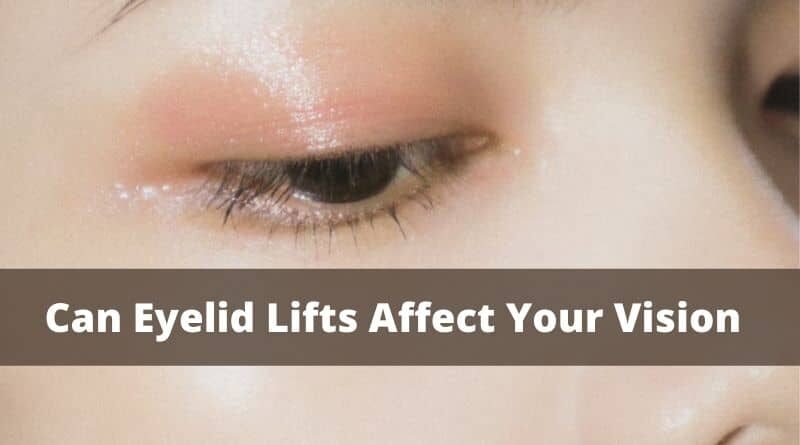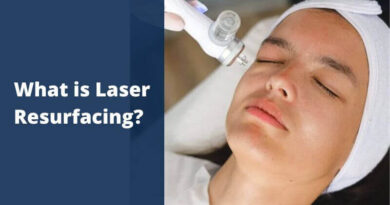Can Eyelid Lifts Affect Your Vision
Blepharoplasty or eyelift surgery is a cosmetic procedure done to recreate a youthful-looking eyelid by repairing droopy eyelids by removing excess fat, muscle, and skin. The eyelids are the initial areas of your face that show signs of aging, such as prolapse fat, saggy excess skin, and wrinkles. The skin around the eyes is the most delicate and thinnest skin of the body, making it susceptible to aging changes and stress. Eyelid surgery or eye lift surgery tightens the skin and eyelid muscles and reduces fat excess to give you an overall rejuvenated facial appearance (WebMD.com, 2020).
According to the American Society of Plastic Surgeons (2017), patients don’t usually experience vision impairments after blepharoplasty. However, swelling around the eye can sometimes lead to temporary vision problems that go away within a few weeks. The issues include blurry vision and dry eye. The length of the impairment depends on the type of eyelid surgery you had.
If excess skin was taken from the top of your eyelid leading to a complete closure of the eye, the dry eyes and blurry vision mat last a little longer. Your cosmetic surgeon should inform you that these symptoms last for about a month after the surgery. A credible cosmetic surgeon can be found here to advise you accordingly about eyelid lifts.
Table of Contents
Types of Eyelift Surgery
Eyelid lift surgery is in three different types. The procedure you need is determined by the shape of your eyes and other prevailing health conditions (American Society of Plastic Surgeons, 2017). Your cosmetic specialist will recommend either of the following:
- Lower Eyelid Lift: This is done around the eyes and lower lid, concentrating on improving appearance, correcting baggy eyes, and removing wrinkles in the skin.
- Upper Eyelid Lift: This procedure is primarily done to enhance vision loss and eye appearance due to genetics or aging. It focuses on the upper eyelid and can regain eye function or provide a rounded and more open appearance.
- Double Eyelid Lift: The surgeon creases the upper eyelid to create a more expansive and larger-looking eye during this procedure. This is a popular procedure in East Asia and among the most referenced concerning eyelift surgery.
Read: The Benefits of Double Eyelid Surgery
Who should have an Eyelid Lift?
According to WebMD.com, the best-suited candidate for eyelid surgery are those in good health and realistic about what they want. Most of this group is 35 years or older, but if droopy eyelids or baggy eyelids run in your family, you can have the surgery before attaining 35 years.
An eyelid lift can enhance your appearance and help restore your self-esteem and build your confidence. But, it may not give you your ideal look or change your facial structure. Before deciding to have an eyelid lift, think about your objectives and discuss their viability with your surgeon.
Preparing for an Eyelid Lift
You should arrange to have someone drive you home after the procedure and someone to stay with you at least for one night. Plan and expect to take time off work and other activities for a few days after surgery to allow your eyelids to heal. Ensure you have the following at home before you have the eyelid lift:
- Small gauze pads
- An ice pack or freezer bag filled with peas, frozen corn, or ice
- Ice cubes
- Artificial tears or eye drops
- Clean towels and washcloths
- Over-the-counter painkillers
Read: Why Do My Eyes Hurt
During the Surgery
An eyelid lift is done with general anesthesia, conscious sedation, or local anesthesia. If the surgery is done on your lower or upper eyelids, the surgeon usually starts work on your upper lids. He cuts along the eyelid fold, removes extra skin, fat, and muscle, and closes the opening.
While working on the lower lid, your surgeon cuts below the lashes inside the lower lid or in the eye’s natural crease. Excess fat is removed or redistributed, removes sagging skin and muscle, and closes the opening.
If your upper eyelids are drooping near your pupil, the surgeon may do an eyelid lift together with a procedure known as ptosis, which provides extra support to your eyebrow muscle (byrdie.com, 2021)
After the Surgery
Your surgeon will put ointment in your eyes to maintain moisture and cover the eyes with cold compresses while you rest in the recovery room. Immediately after the procedure, you may experience blurry vision because of the ointment and be light-sensitive. Your eyes may also feel watery or dry. When you get home, it would be helpful to place ice packs on your eyes and raise your head as you sleep on the first night after the procedure. Your doctor will issue further instructions on how to take care of your eyes.
Read: Important to Maintain Contact Lens Hygiene
Eyelid Lift Recovery
After an eyelid lift, both your eyelids will have stitches in place for up to one week. Swelling and bruising are common after eyelid lifts, but your eyelids will look normal after one week.
Do the following while in recovery:
- Place icepacks on your eyes for ten minutes every hour on the night after the procedure.
- Clean your eyes gently and apply prescribed ointments or eye drops
- Avoid swimming, heavy lifting, or straining for a week after surgery
- Avoid strenuous activities for a week
- Do not rub your eyes
- Do not smoke
- If you have contact lenses, do not use them for up to two weeks after the procedure
- Wear dark sunglasses to protect your eyelids from wind and sun.
Eyelid Lift Results
Upper eyelid lift lasts for at least 5-7 years. The lower eyelid lift hardly needs to be redone. But, your eyes will still experience aging after the surgery. If eyelid sagging occurs again, you may need to have a forehead lift instead of another eyelid lift.
The essential thing to note is that the surgery results may take time to be truly visible. As with any other cosmetic surgery, it can take up to 12 months post-surgery to yield the full benefits of the surgery. (American Society of Plastic Surgeons, 2017).
Recommended Articles:
Reactions To The Lash Adhesives




